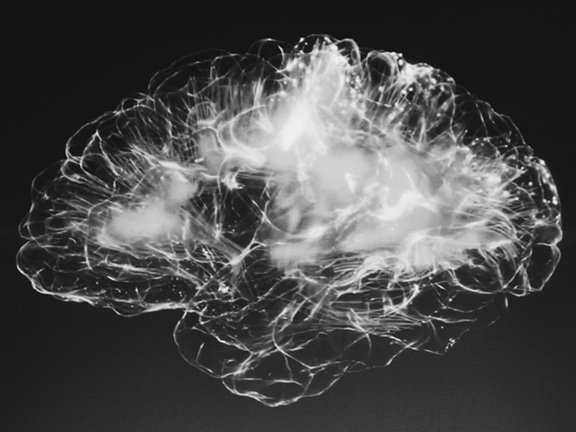Light Therapy focuses on two key delivery mechanisms impacting both Electrical Activity and Cellular Change in the brain.
Electrical Activity
Pulsating visible Light (VLT), reboots the electrical activity of the brain to its original frequency.
VLT targets the Occipital lobe through the eyes via an ocular component producing full spectrum, soft white, light.
VLT oscillates at 40HZ
(Gamma Frequency)
+ Gamma Frequency: Reprograms the brains natural gamma rhythms of 40Hz as shown on a healthy EEG. Gamma wave activity improves learning, problem solving, compassion, self control.
+ Phagocytosis: Activates dormant microglial cells (known as janitorial cells) to remove the build-up of toxic plaque between neurons and to eliminate dead and damaged cells.
+ Synaptogenesis: Restores synapses between neurons in the brain, necessary for creating new memories and for recognizing people and places and linking complex ideas.
+ Neurogenesis: Production of new neurons, replacing damaged neurons due to disease or traumatic events.
Cellular Change
Visible Red and Invisible Near-Infrared Light (NIR), provides healing, pain relief and stimulates improved sleep.
Transcranial light penetrates the skull, targeting all regions of the brain.
Red Light optimal range = 650nm
NIR Light optimal range = 810nm
Oscillates at 10Hz (Alpha) or 40Hz (Gamma)
+ Blood Flow: Nitric oxide is a vasodilator that improves circulation and increases blood flow in the brain, the newly bound oxygen accelerates the production of ATP.
+ Energy: Absorbed by the Mitochondria releasing nitric oxide. Nitric oxide is a chemical messenger that transmits information.
+ Anti-Oxidants: Stimulates small bursts of free radicals called Reactive Oxygen Species (ROS) to produce healthy stress, improving the body’s immune system. ROS are vital cell-signaling molecules that produce powerful intracellular antioxidants, including the ‘master antioxidant’, glutathione.
- Inflammation: Powerful anti-inflammatory, changing immune cells in the brain from pro-inflammatory M1 to anti-inflammatory M2.
Published Research by Application
PREVENTATIVE:
Turning on Lights to Stop Neurodegeneration (Alzheimer’s, Parkinson’s, TBI)
Photonics Sep 2019: PBM, has the Light Dawned?
Photobiomodulation with near infrared light mitigates Alzheimer’s
Neuroprotective Action of Near-Infrared Light (Parkinson’s)
Preconditioning with low-level light therapy
LLLT Prevents Secondary brain injury
DEGENERATIVE: Dementia, Alzheimer’s, Parkinson’s
*PBM for Brain Disorders (stroke, TBI, Alzheimer’s, Parkinson’s, Psychiatric)
Significant Improvement in Cognition in Mild to Moderately Severe Dementia
Neuroprotective outcomes of 670nm and 810nm NIr (Parkinson’s)
Near-infrared light is neuroprotective in a monkey model Parkinson
PBM preserves behavior and midbrain cells from MPTP Toxicity
NIR on dopaminergic cell survival in a transgenic mouse model of Parkinsonism
PBM enhances cell survival in mouse model (Parkinson’s)
NIR mitigates cerebellar pathology in transgenic mouse models of dementia
TRAUMATIC: Stroke, Coma, Traumatic Brain Injury, CTE
*PBM for Brain Disorders (stroke, TBI, Alzheimer’s, Parkinson’s, Psychiatric)
**Improved Cognitive Function After Transcranial, LED Treatment, TBI
LED Therapy to Treat Stroke, TBI, Neurodegenerative Disease
TBI - Could Be Treated Using Transcranial, Red NIR LED PBM (stroke)
CTE found in 99% of formal NFL Players studied
PBM promotes cognitive function recovery (Global Ischemia)
PSYCHIATRIC: Depression, Insomnia, PTSD
*PBM for Brain Disorders (stroke, TBI, Alzheimer’s, Parkinson’s, Psychiatric)
**Improved Cognitive Function After Transcranial, LED Treatment, TBI
Phototherapy for the treatment of Co-morbid Depression
Reduction of Opioid Cravings with PBM treatment
DEVELOPMENTAL: Autism, ADHD
Efficacy of NIR Treatment on ASD (autism spectrum disorder)
PBM in Autism Spectrum Disorder
SUPPORTING RESEARCH:
Photobiomodulation inside the brain is non-toxic


